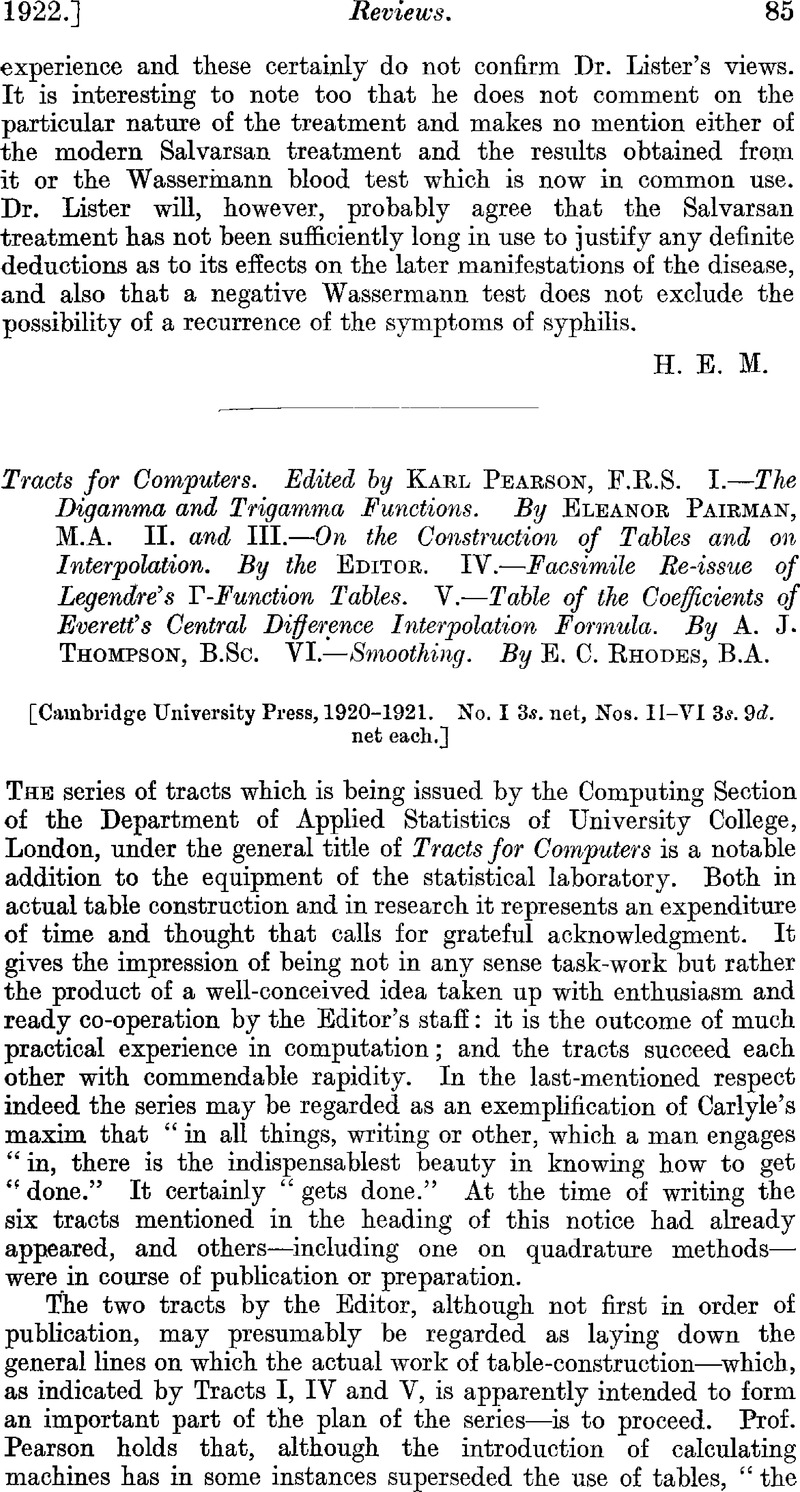No CrossRef data available.
Article contents
Tracts for Computers. Edited by Karl Pearson, F.R.S. I.—The Digamma and Trigamma Functions. By Eleanor Pairman, M.A. II. and III.—On the Construction of Tables and on Interpolation. By the Editor. IV.—Facsimile Re-issue of Legendre's Γ-Function Tables. V.—Table of the Coefficients of Everett's Central Difference Interpolation Formula. By A. J. Thompson, B.Sc. VI.—Smoothing. By E. C. Rhodes, B.A. [Cambridge University Press, 1920–1921. No. I 3s. net, Nos. II–VI 3s. 9d. net each.]
Review products
Published online by Cambridge University Press: 18 August 2016
Abstract

Information
- Type
- Reviews
- Information
- Copyright
- Copyright © Institute and Faculty of Actuaries 1922
References
page 87 note * This tract is dedicated “to my fellow members of the Actuaries' Club, with the following extract from a letter written in 1675 by John Evelyn, F.R.S., to John Aubrey, F.R.S.: “Sir, I beseech you to accept or pardon these trifling “interpolations, which I have presumed to send you.” We venture to congratulate Prof. Pearson on the recollection or discovery of this truly delectable quotation.
page 90 note * i.e., the method of taking u1 = Σpu where Σp 2 is a minimum and differences. of order higher than j are negligible, or (what comes to the same thing), of fitting a parabola of order j to u−m … um by least squares and taking the central ordinate as u'. For convenience we follow the author of the Tract in referring to this as Dr. Sheppard's method, but it must be remembered that it is only incidentally a method of graduation, being strictly a method of obtaining thn best values of the individual u's on certain assumptions as to the nature of their errors, and that if smoothness of the graduated series as a whole—combined with accuracy—is desired Dr. Sheppard recommends—on the same assumptions— the method (to which the summation method at its best is an approximation) of obtaining as accurate values as possible for the differences of u' of order j.

